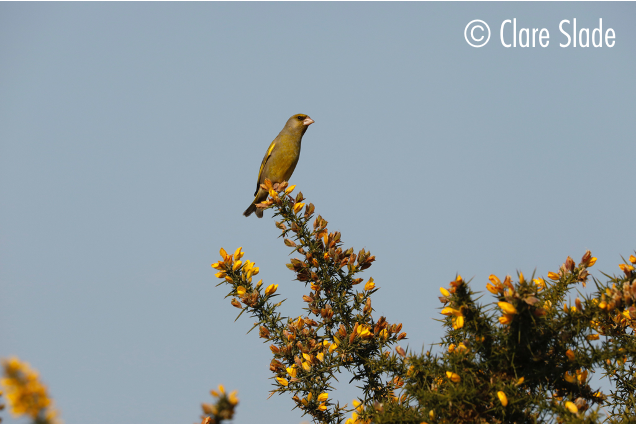Site And Records Information
Brownsea had the largest heronry in Dorset. It was thought to have become established in the early 1800’s but was deserted when all the trees were felled at the height of Brownsea’s habitation. The birds moved to Arne then returned again when war training started there.
By then it was under Mrs Christies ownership although the island had became overgrown and had even been set alight in July 1934 by one of the evicted villagers meaning suitable nest sites must have returned.
Because Mrs Christie wouldn’t let anyone on not even to count birds in the 1961 Bird Report A.J.Bull wrote, “When last enumerated in 1955 the Brownsea Island heronry held 32 nests. Though a systematic count was not possible Angela Hughes flew over the island on July 7th and was able to see about 30-40 white-washed nests.
The birds peaked at a maximum of 131 pairs in 1971 “ and it was the second largest heronry in Britain and one of the largest in Europe” said Tony Wise, ex-Brownsea Warden. It dropped to 62 pairs by 1997 and down further to 44 pairs in 1999. . By 2002 with just 33 nests they were outnumbered by Little Egret nests and there were just 31 pairs in 2004.
The Arne Heath colony was abandoned in the 1940’s after war training started there, with the remaining birds joining the colony at Brownsea. In 1957 the Brownsea colony was estimated at 48 nests. By 1967 this had risen to 90 pairs and by 1971 stood at 131 pairs. Sadly, it was all downhill after that, with the colony then steadily shrinking year on year. In 2010 only seven pairs were left. The following year none!
Here’s an extract from the most recent report, commissioned by Birds of Poole Harbour titled: The Ciconiiformes of Poole Harbour – N.Hopper 2016-18
“Poole Harbour’s breeding population currently consists of a heronry at Arne Heath plantation. A quiet (at the moment anyway) commanding place. Occasionally, Grey Herons will nest solitarily. Two adults appeared to spend both breeding seasons on Brownsea Island and single pairs have nested here recently but no evidence of breeding was found.
Grey Herons are one of the earliest nesting birds and it is not unusual for them to lay their eggs in February. Once the young have fledged, usually by early July, the site is no longer used as a roost site. The survey from November 2016 until the end of April 2018 allowed a full breeding season to be monitored and breeding numbers to be determined for the following season. For the first ‘season’ Grey Herons were already seen taking an interest in the site on 7th November, when two rather vocal birds circled the plantation a few times at dusk. It was not clear whether they roosted there. The first birds seen to enter the plantation to roost was on 11th November 2016. Over the next month, a trickle of arrivals pushed the number up to 9 birds. Habits now started to change with birds regularly loafing nearby in the day, often in pairs, particularly in and around the mouth of the Frome river at low tides. Toward the end of the day a regular pre-roost gathering also formed, usually somewhere in the middle of the intertidal mud at the far southern end if the tide was low, or on the beach some 100m north of the colony if the tide was up. More arrivals in December and into January. By the third week of January, up to 16 could be seen pre-roosting together on the intertidal mud or stood about in pairs alongside the riverside margins anywhere from the mouth of the Frome.
Around the same time at least 20 birds were now regularly entering the colony to roost. For the 2017 season, this was the highest number achieved, suggesting that all birds that were intending to nest were already on site. February involved a lot of interaction, vocalisation and nest sprucing. Toward the end of the month birds were seen sporting reddish legs and bills. Mid-April saw plenty of to-ing and fro-ing from the colony until the first fledged bird was seen on 20th May. Incubation and fledging generally takes about 80 days, putting first the egg laying in the last week of February. Some unfledged juveniles were still at the nest on 12th July at least, nearly two months after the first fledged birds, suggesting perhaps a failed first brood. At the end of July the colony was deserted.
The routine was very similar for the 2018 breeding season. The first bird to start using the colony site to roost was on the very early date of 3rd November. It was a lonely month however for that bird, with the next birds not turning up until 25th November. Perhaps it was just coincidentally using the plantation to roost rather than to claim the best spot. Up to five gathered birds loafing on the mudflats in early December, rising to 10 by early January. Late January and up to 20 were communally pre-roosting on the mud at the far southern end of the Wareham Channel. All potentially breeding birds had again arrived by late January when a more or less regular 25 were now using the roost. During and after the very cold period at the end of February, disturbance was kept to a minimum. A visit on 12th April was greeted by some rather loud chattering nestlings, presumably reasonably sized fit and healthy birds suggesting that the breeding program had hardly been compromised. The number of breeding pairs for the 2017 season was nine. In 2018 the number of breeding pairs was 11″
